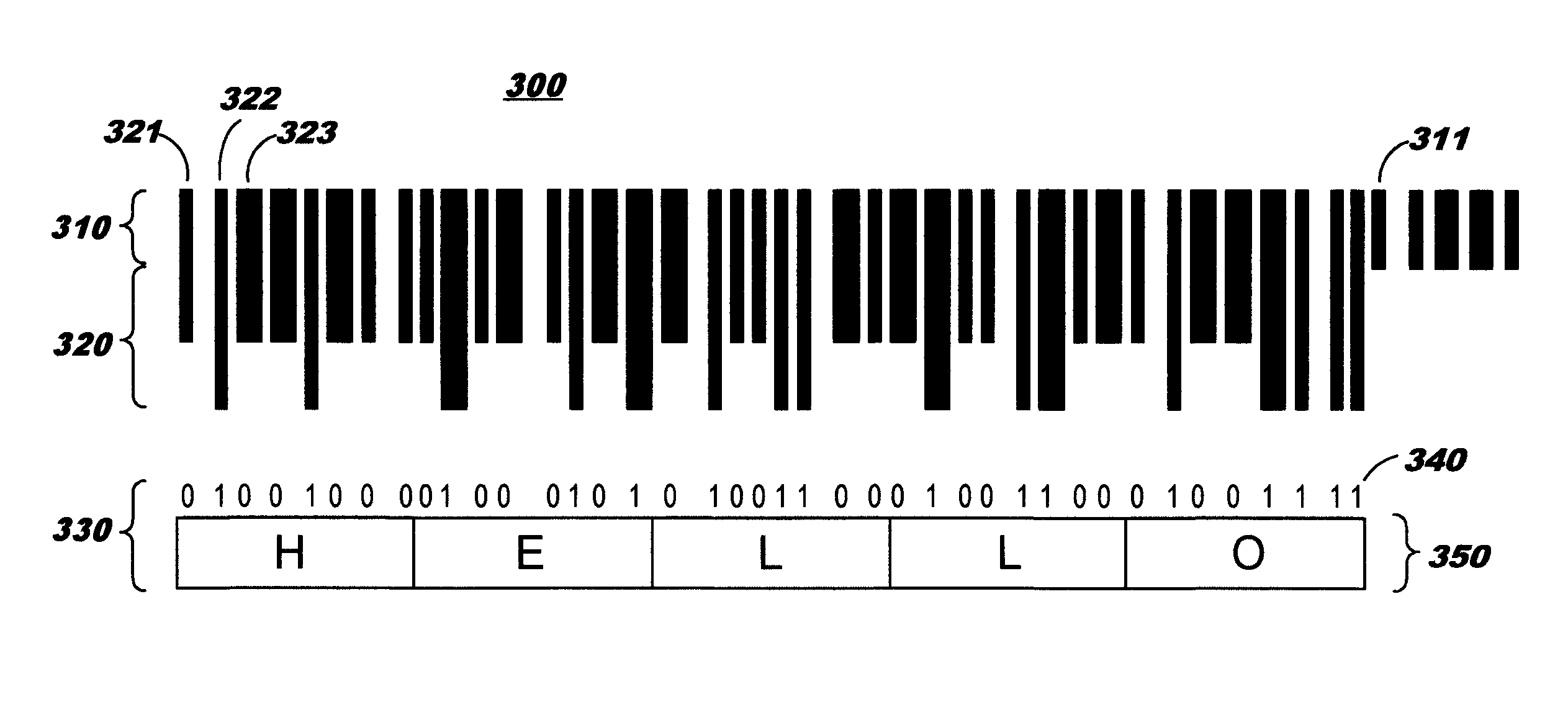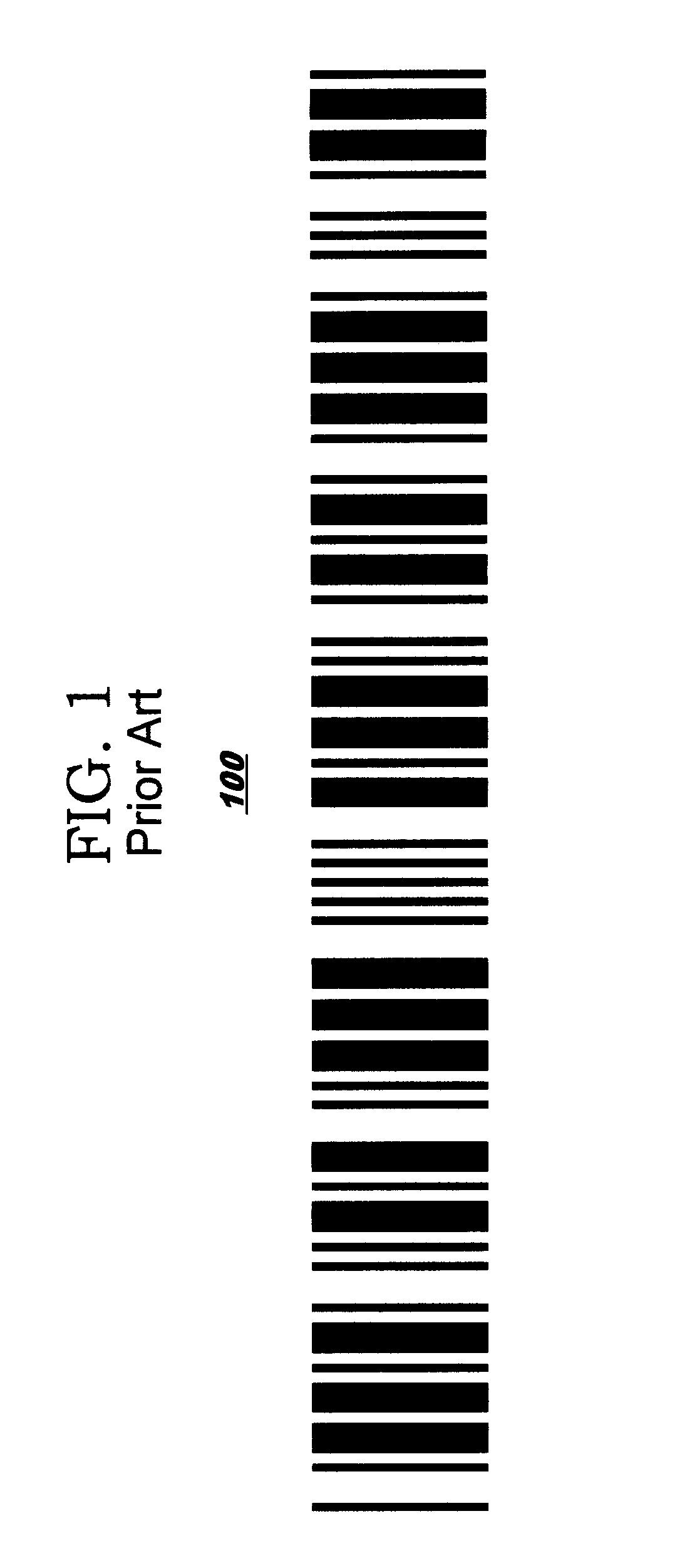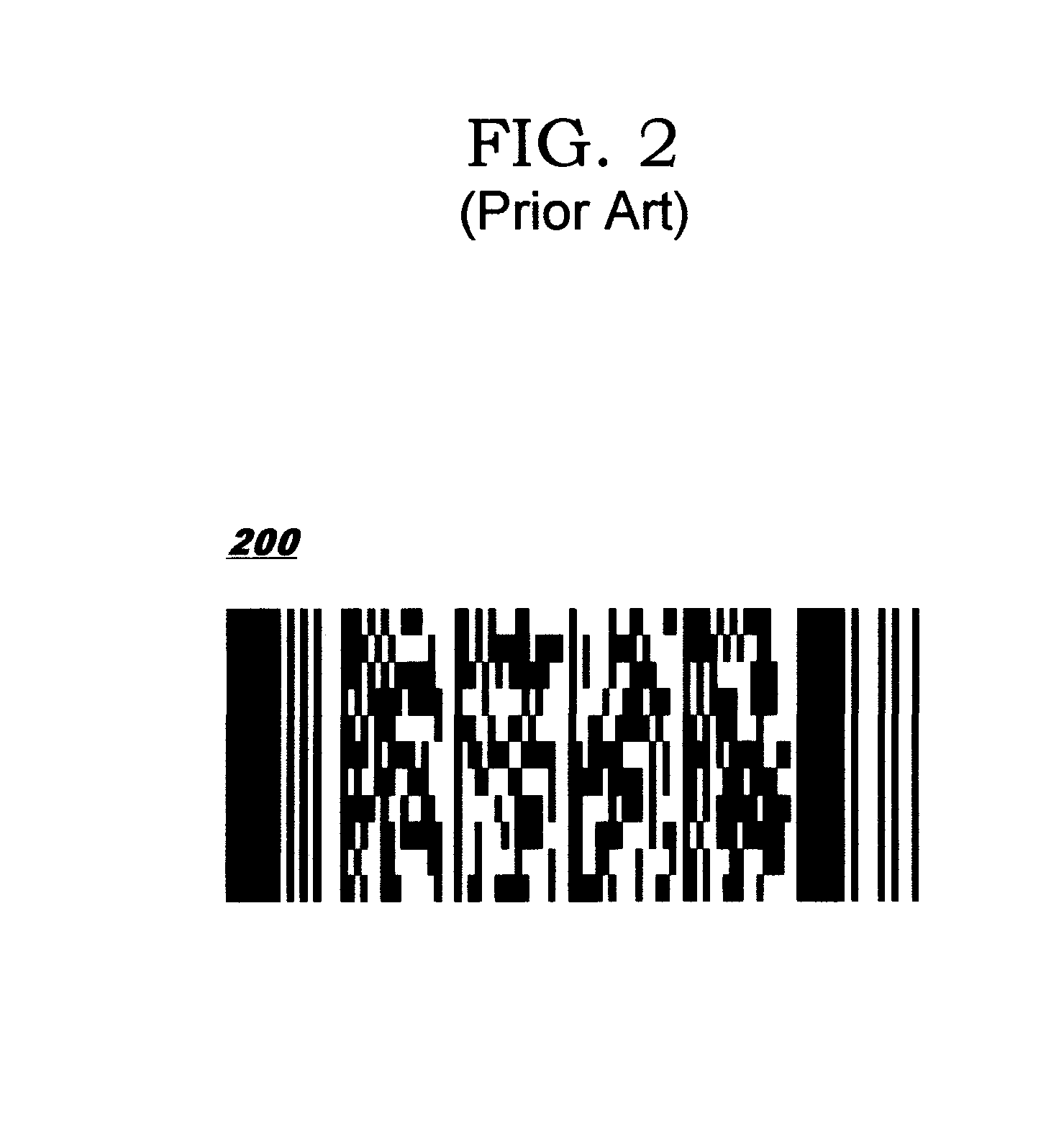Additional Encoding in Conventional One-Dimensional Bar Code Symbologies
- Summary
- Abstract
- Description
- Claims
- Application Information
AI Technical Summary
Benefits of technology
Problems solved by technology
Method used
Image
Examples
Embodiment Construction
[0015]Embodiments of the present invention are directed toward encoding additional data within a 1-D bar code symbology. Two-dimensional (hereinafter, “2-D”) encoding is disclosed, within any conventional or legacy 1-D bar code symbology, by varying the height of each dark bar in the 1-D bar code. Embodiments of the present invention encode the 2-D information as a type of extension of a 1-D bar code. The standard portion of the 1-D bar code remains readable by existing 1-D scanners, thus providing backward compatibility. The information in the additional dimension can be read by a 2-D scanner—and notably, the 2-D scanner can also read the 1-D portion. (Accordingly, an environment where a 2-D scanner is deployed does not need to separately scan the 1-D portion of the bar code with a 1-D scanner.)
[0016]A conventional 1-D bar code consists of narrow and wide dark bars, with narrow or wide spaces between them. The dark bars absorb light, and the spaces reflect light. A conventional 1-D...
PUM
 Login to view more
Login to view more Abstract
Description
Claims
Application Information
 Login to view more
Login to view more - R&D Engineer
- R&D Manager
- IP Professional
- Industry Leading Data Capabilities
- Powerful AI technology
- Patent DNA Extraction
Browse by: Latest US Patents, China's latest patents, Technical Efficacy Thesaurus, Application Domain, Technology Topic.
© 2024 PatSnap. All rights reserved.Legal|Privacy policy|Modern Slavery Act Transparency Statement|Sitemap



